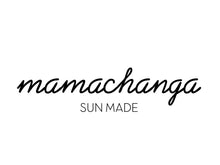The Batik

Drawing a batik design on the heart, " mbatik manah", the Javanese phase for the mystical experience of making batik, is a refined process in which the sun, the different dyes, and the wax, all together take part deciding tones and colors in an art explosion.
For hours, the sun will tan the cloth giving it the tone will make it unique. One Batik will never be repeated.
Once upon a time...
Samples of dye resistance patterns on cloth can be traced back 1,500 years ago to Egypt and the Middle East. Samples have also been found in Turkey, India, China, Japan and West Africa,
In Java, batik was originally reserved as an art form for Javanese royalty and it was thought that certain cloth had mystical powers to ward off ill fortune, while other pieces could bring good luck.
Traditional colors for Central Javanese batik were made from natural ingredients and consisted primarily of beige, blue, brown and black. The oldest color that was used in traditional batik making was blue. The color was made from the leaves of the Indigo plant.
The leaves were mixed with molasses sugar and lime and left to stand overnight.Sometimes sap from the Tinggi tree was added to act as a fixing agent.
Lighter blue was achieved by leaving the cloth in the dye bath for short periods of time. For darker colors, the cloth would be left in the dye bath for days and may have been submerged up to 8 - 10 times a day.
Process
The outline of the pattern is blocked out onto the cloth, traditionally with charcoal or graphite, and wax is applied to the cloth over the areas of the design that the artisan wishes to remain the original color of the cloth.
Common waxes used for batik consist of a mixture of beeswax, used for its malleability, and paraffin, used for its friability. Resins can be added to increase adhesiveness and animal fats create greater liquidity.
The best waxes are from the Indonesian islands of Timor, Sumbawa and Sumatra.
The wax is applied with a "canting", a small thin wall spouted copper container (sometimes called a wax pen) that is connected to a short bamboo handle, or a copper stamp called "cap". The copper container is filled with melted wax and the artisan then uses the canting to draw the design on the cloth.
After the initial wax has been applied, the fabric is ready for the first dye bath, and then is left to dry under the sun.
When the desired color has been achieved and the fabric has dried, wax is reapplied over the areas that the artisan wishes to maintain the first dye color,then applied wax is scraped away with a small knife before it is re-immersed in the subsequent dye bath.
The number of colors in batik represents how many times it was immersed in the dye bath and how many times wax had to be applied and removed.
The process for making one Batik can takes several weeks and the result is a unique cloth, with its own personality, and fill it up with solar energy from the islands of the South Seas.
